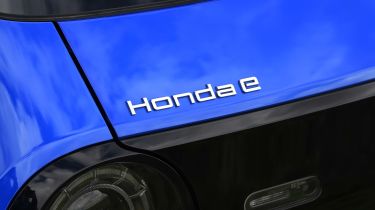Honda e review: reliability & safety rating
The Honda e is packed with driver aids, although the absence of some of the latest systems as standard meant it only scored four out of five in Euro NCAP crash testing
| Euro NCAP | Adult protection | Child protection | Safety assist |
|---|---|---|---|
| 4 stars (2020) | 76% | 82% | 65% |
The Honda e was independently crash-tested by Euro NCAP in December 2020, and although it's very generously equipped with safety equipment, it only scored four out of five stars in the evaluation. Reliability should be very good, although the car has sold in far too few numbers for us to have any concrete data in this regard.
Honda e reliability & problems
There’s too little data on the Honda e to judge accurately how reliable it'll be, but Honda has a great reputation for dependability as a brand; it was ranked fifth out of 29 manufacturers surveyed in the 2022 Driver Power owner satisfaction survey. However, it could only muster an 18th-place finish out of 32 brands in the 2023 iteration of the survey. Only 15% of owners reported a fault with their car within the first year of ownership, though, which is below average and a good sign for prospective Honda e buyers.
Safety
The Honda e gets an impressive array of safety equipment, including a semi-autonomous driving mode that combines lane-keeping assistance and adaptive cruise control to help take the stress out of heavy traffic and motorway driving.
It also gets traffic-sign recognition that beams the relevant speed limit onto the dashboard, as well as those camera side mirrors. Go for the Advance trim level and you get a rear-view camera built into the rear-view mirror, which you can switch on or off, as well as an automatic parking system that’ll steer the car into a parking space for you. There’s no space-saver spare wheel or spare tyre; a tyre inflation kit is standard.
In December 2020, the Honda e was awarded four out of a possible five stars for safety by the independent crash-testing body Euro NCAP. Its individual ratings for adult and child occupant protection were 76 and 82%, while for safety assist it was rated 65%.
Euro NCAP noted that: "protection of the driver's chest was rated as marginal, based on measurements of compression, and that of the driver’s lower right leg was rated as poor, also based on dummy readings. Measurements in the knees and femurs of both driver and passenger dummies indicated a marginal level of protection and the scores for these regions were penalised owing to potentially injurious structures in the dashboard."



